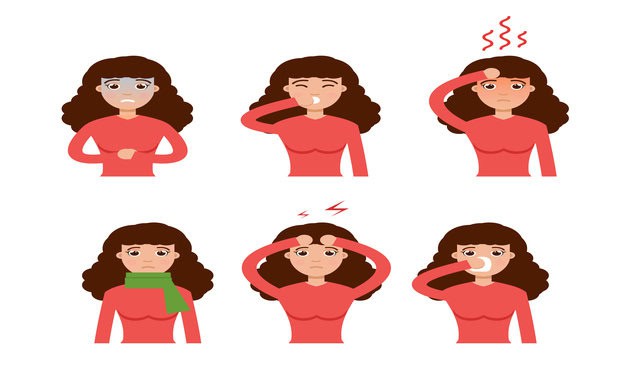
Cold, as we all know is one of the most commonly encountered respiratory infections in children as well as in adults. It has been observed that children are likely to suffer from cold 6-10 times in a year while the figure varies between 2 to 4 on an average among adults.
A common cold is generally associated with a sore throat, cough, blocked and/or runny nose, sneezing, headache, malaise, and low-grade fever. However, sometimes, you may develop symptoms that are suggestive of conditions other than cold.
Is it cold, or something else?
As cold usually gets better within a week, most of you may not consider seeking a medical advice. But, it is important to understand that many serious diseases often start as a cold.
In order to differentiate between a common cold and a condition that requires medical attention, you must be aware of the following 6 signs, the red flags:
1. High fever or low-grade fever for days
Although moderate fever indicates that your immune system is fighting against the pathogens, a high-grade fever (> 102 degree Celsius) implies that your body may be dealing with a condition that is not a common cold.
On the other hand, running a low-grade fever for several days is also a matter of concern. It is a sign that your body is trying to combat something which is more than a cold such as flu or mononucleosis.
2. Being sick, recovering and getting sick again
If you have been sick, felt better and then fell sick again, it is most likely to be a sign of superinfection – a serious secondary infection that occurs when your immune system weakens due to a mild illness. Various factors that could be responsible for this are:
a) A tired immune system which enables penetration of another infection into your body.
b) Reduced number of pathogens which protected you initially. This leads to the entry of other harmful organisms.
c) Exposure to a secondary infection after recovery due to which you fall sick again.
3. Severe headaches
If you have pressure headaches or headaches that feel worse around your eyes and nose, it could be a sign of sinus infection. On the other hand, if headaches are intense enough to interfere with your concentration or ability to think clearly, it could be a disorder involving the central nervous system like meningitis.
4. Severe body aches
If you are feeling so achy and weak that getting up from the bed appears to be a huge task, and also experiencing fatigue or muscle aches, there is a high probability that you are suffering from flu.
5. Stomach problems
Symptoms such as nausea, vomiting, and diarrhea usually do not accompany common cold, and may be suggestive of flu.
6. Chest pain or trouble in breathing/heart palpitations
Although a cough is commonly associated with cold, it becomes a considerable cause of concern if it causes shortness of breath, wheezing, or chest pain. Trouble in breathing could be a sign of pneumonia or bronchitis, while chest pain, tightness, and sudden shortness of breath may imply a blood clot blockage in the lungs (pulmonary embolism) which can, in turn, cause heart palpitations.
Therefore, it is always a good idea to consult a doctor to address any underlying illness.
Never avoid any of these symptoms as it is better to be safe than sorry.